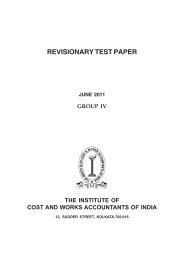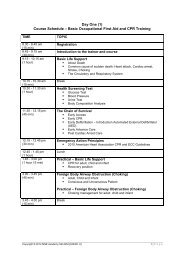Eric lippert - Amazon Web Services
Eric lippert - Amazon Web Services
Eric lippert - Amazon Web Services
You also want an ePaper? Increase the reach of your titles
YUMPU automatically turns print PDFs into web optimized ePapers that Google loves.
azure mobile services<br />
Push Notifications in<br />
Windows 8 Apps<br />
Sumit Maitra introduces the Windows Push Notification Service and how to<br />
implement it for Windows 8 Store Apps using Azure Mobile <strong>Services</strong><br />
With the popularity of Smart Phones and<br />
always connected (to internet) devices,<br />
‘push notifications’ have gained immense<br />
popularity. Though push notifications are<br />
not new and Exchange had implemented<br />
Active Sync quite some time back,<br />
smartphones have made them<br />
ubiquitous and brought them out of the<br />
Enterprise-y setups. So today, we often<br />
receive updates instead of looking<br />
(polling) for updates. This can be a more<br />
efficient process depending on the<br />
implementation.<br />
Common examples of Push<br />
notification usage are, mail clients that<br />
receive new mail notifications as they<br />
come to their server’s Inbox. E.g. Social<br />
Media apps that push updates to all<br />
subscribed as soon as someone makes<br />
an update to their status or games that<br />
can push leaderboard updates of your<br />
position changes and so on.<br />
Given the popularity and utility of Push<br />
Notifications, it’s a desired feature to<br />
have in mobile applications. However,<br />
setting up the infrastructure to do so<br />
is non-trivial on any client (Windows<br />
Phone, iOS, Android or Windows 8)<br />
platform. This is where the Windows<br />
Azure Team has stepped in with the<br />
Windows Azure Mobile <strong>Services</strong> that<br />
among other things, aim to ease the<br />
burden of building Push Notification<br />
infrastructure for connected apps.<br />
Today, we will see how to build a<br />
Windows 8 Store App that is capable<br />
of receiving push notifications. For the<br />
backend infrastructure we will use<br />
Windows Azure Mobile <strong>Services</strong>.<br />
Windows (Push)<br />
Notification Service<br />
The underlying infrastructure that enables Push notifications is<br />
referred to as Windows Push Notification Service or WNS for short.<br />
The typical process is as follows:<br />
1. You first get an App SID and Client Secret for your Windows 8<br />
Store App and store it in your <strong>Web</strong> Service.<br />
2. Next your App requests Windows for a ‘Channel’ and sends it to<br />
your <strong>Web</strong>Service so that it can track the channels.<br />
3. When one of the clients submit some data to your web service<br />
that needs to send out push notifications, the web service provides<br />
WNS with the SID and Client secret along with the channel details for<br />
the notification to propagate.<br />
Figure: Relationship between the various components that your app must communicate with, for WNS to work<br />
4. All clients that the data was intended for, then receive the push notification. The clients could be direct recipients or subscribed for by the client<br />
5. Notifications in Windows 8 can be<br />
a. Tile notifications (primary/secondary)<br />
b. Toast notifications (for toast popup)<br />
c. Raw notifications (to download data)<br />
72 | DNCmagazine www.dotnetcurry.com

















